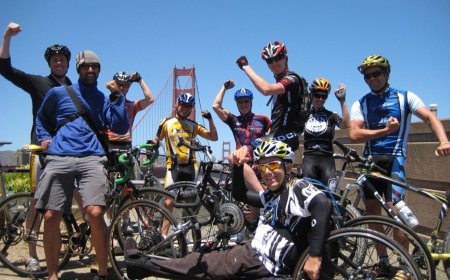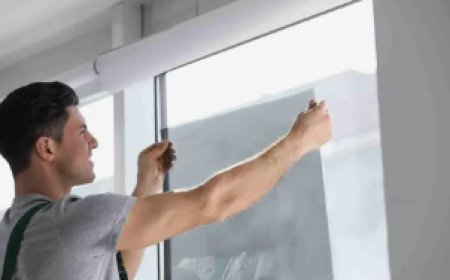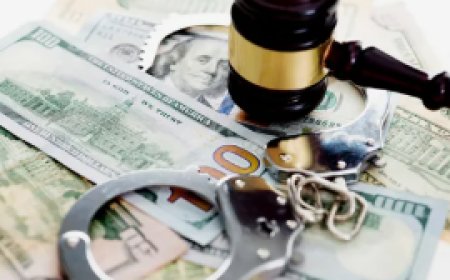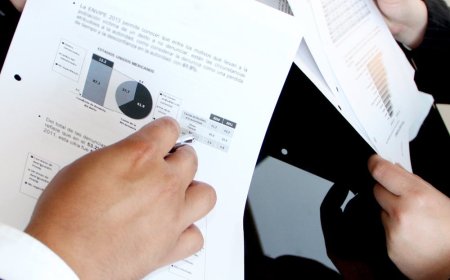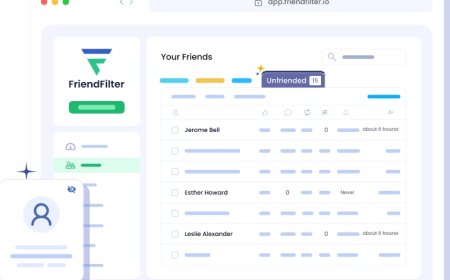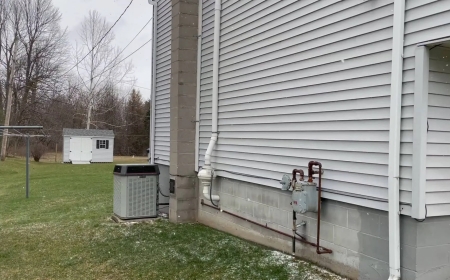How To Salsa Dance Lessons Dallas Free
How to Find Free Salsa Dance Lessons in Dallas Salsa dancing is more than just a form of exercise—it’s a vibrant cultural expression that brings people together through rhythm, movement, and community. In Dallas, a city known for its rich Latin heritage and thriving arts scene, salsa dancing has become a beloved pastime for residents of all ages and backgrounds. Yet many people assume that learnin
How to Find Free Salsa Dance Lessons in Dallas
Salsa dancing is more than just a form of exercise—it’s a vibrant cultural expression that brings people together through rhythm, movement, and community. In Dallas, a city known for its rich Latin heritage and thriving arts scene, salsa dancing has become a beloved pastime for residents of all ages and backgrounds. Yet many people assume that learning salsa requires expensive studio fees, private instructors, or long-term commitments. The truth? You can learn to salsa dance in Dallas for free—and with genuine, high-quality instruction.
This guide will show you exactly how to access free salsa dance lessons in Dallas, step by step. Whether you’re a complete beginner or someone looking to refine your skills without spending a dime, this resource covers everything you need to know: where to find free classes, how to maximize your learning, what tools to use, and real-life examples of people who’ve succeeded using these methods. By the end, you’ll not only know how to dance salsa for free—you’ll understand how to become part of Dallas’s dynamic salsa community.
Step-by-Step Guide
Step 1: Research Local Community Centers and Parks
The foundation of finding free salsa lessons in Dallas begins with local public institutions. Many city-run community centers and park districts offer free or donation-based dance classes as part of their wellness and cultural enrichment programs. Start by visiting the official websites of:
- Dallas Parks and Recreation Department
- Dallas County Community College District (DCCCD)
- Neighborhood-specific centers like the Oak Cliff Cultural Center, Fair Park Community Center, or the Latino Cultural Center
Each site typically has a “Classes & Events” or “Arts & Culture” section. Filter for “dance,” “Latin dance,” or “salsa.” Many of these programs operate seasonally—often in spring and fall—and are advertised weeks in advance. Sign up for their email newsletters or follow their social media pages to get notified when registration opens.
For example, the Latino Cultural Center in downtown Dallas regularly hosts free salsa nights and beginner workshops. These are often led by local instructors who volunteer their time to promote cultural engagement. Attendance is open to the public, and no prior experience is required.
Step 2: Attend Free Salsa Socials and Practice Nights
One of the most effective—and fun—ways to learn salsa is by attending free social dance events. These gatherings, often called “salsa socials” or “dance jams,” are held weekly in venues across Dallas. While they’re not formal lessons, many include a 30- to 45-minute free beginner lesson before the dancing begins.
Popular free salsa socials in Dallas include:
- La Fiesta Salsa Social at The Deep Ellum Art Company (first Thursday of each month)
- Dallas Salsa Meetup at the Mexican Cultural Institute (every Wednesday evening)
- Free Salsa Night at The Bomb Factory (second Saturday, beginner lesson at 7 PM)
To find these events, join local Facebook groups such as “Dallas Salsa & Bachata Socials” or “Salsa Lovers Dallas.” These groups are active, moderated, and frequently post event details, including whether a free lesson is included. You can also search Eventbrite using filters like “free,” “salsa,” and “Dallas.”
Pro tip: Arrive 15–20 minutes early. The beginner lesson usually starts before the main dance floor opens. Don’t be shy—ask the instructor for clarification if you miss a step. Most instructors welcome beginners and will repeat movements.
Step 3: Utilize Public Libraries and Educational Institutions
Dallas Public Library branches offer more than books—they host free cultural workshops, including dance. The main library on Akard Street and branches like the North Central, South Dallas, and Lake Highlands libraries regularly schedule free Latin dance classes in partnership with local dance schools and cultural organizations.
Check the library’s events calendar online. Look for listings under “Adult Programs,” “Cultural Events,” or “Arts & Fitness.” Some classes are drop-in, while others require registration due to limited space. Don’t assume they’re canceled if you don’t see them listed every week—many are monthly or seasonal.
Additionally, Dallas County Community Colleges (like Dallas College) sometimes offer non-credit, no-cost dance courses through their Continuing Education divisions. These are not for college credit but are open to the public. Search their course catalog for “dance,” “movement,” or “Latin dance” and filter for “no tuition.”
Step 4: Connect with Local Dance Instructors Who Offer Free Intro Classes
Many professional salsa instructors in Dallas offer a free first class as a way to introduce new students to their teaching style. While most studios charge for ongoing lessons, the initial session is often complimentary. This is a legitimate and common marketing strategy—and it’s completely legal and ethical.
Some studios known for free introductory salsa classes in Dallas include:
- Amor Salsa Dance Studio – Free beginner class every Tuesday at 7 PM
- Step by Step Dance Studio – First lesson free with registration
- Dallas Salsa Academy – Free “Salsa 101” workshop once a month
To find these, Google “free salsa lesson Dallas” or “beginner salsa class Dallas free.” Look for studios with recent reviews mentioning “free intro class.” Call ahead to confirm availability, as some require RSVPs. Bring comfortable shoes and a water bottle. These classes typically last 60–90 minutes and cover basic steps, timing, and lead-follow technique.
Step 5: Learn from Free Online Resources and Local YouTube Creators
While in-person instruction is ideal, online resources can supplement your learning—especially if you can’t attend a class every week. Dallas-based salsa instructors often create free YouTube tutorials tailored to local dancers.
Search YouTube for:
- “Dallas salsa basics tutorial”
- “Free salsa lessons Texas”
- “Salsa for beginners Dallas”
Look for channels with consistent uploads, clear camera angles, and real-time feedback. Some recommended Dallas-based creators include:
- Salsa with Maria D. – Focuses on footwork and timing, filmed at Fair Park
- Dallas Salsa Coach – Breaks down patterns used in local socials
- Latin Rhythm Dallas – Offers weekly 10-minute drills for home practice
Use these videos to review techniques before attending in-person events. Practice in front of a mirror at home. Record yourself weekly to track progress. Even 15 minutes a day of focused practice can dramatically improve your confidence and coordination.
Step 6: Volunteer or Assist in Exchange for Lessons
Many free salsa events rely on volunteers to help with setup, registration, music, or photography. If you’re passionate about learning and willing to contribute, reach out to event organizers and offer your help. In return, you may receive complimentary access to lessons or priority seating.For example, the annual “Dallas Latin Dance Festival” hires local volunteers to assist with logistics. In exchange, volunteers get free access to all workshops—including salsa classes taught by nationally recognized instructors.
Send polite, professional emails or DMs to event coordinators on social media. Say something like:
“Hi, I’m new to salsa and eager to learn. I’d love to help out at your next event—whether it’s setting up chairs, greeting guests, or managing the music playlist. If there’s a chance I could also join the beginner class, I’d be incredibly grateful.”
Many organizers are happy to accommodate sincere, enthusiastic learners.
Step 7: Join Free Dance Challenges and Online Communities
Throughout the year, Dallas-based dance influencers and organizations host free 30-day salsa challenges on Instagram and TikTok. These challenges encourage daily practice, provide video prompts, and often include live Q&A sessions with instructors.
Examples include:
DallasSalsa30Challenge
– Hosted by local studio owners; participants post daily videos for feedback- Salsa Freebie Fridays – Weekly Instagram Live sessions with a different instructor each week
Follow hashtags like
SalsaDallas, #FreeSalsaDallas, and #LearnSalsaTexas. Engage with posts by commenting and asking questions. Many instructors respond directly and may even invite you to join a free group class.
Additionally, join Reddit communities like r/SalsaDancing or r/Dallas. Search for threads about free lessons. You’ll often find user-generated lists of upcoming events, tips on what to wear, and even ride-share groups for people heading to the same venue.
Best Practices
Be Consistent, Not Perfect
One of the biggest mistakes beginners make is waiting until they feel “ready” to dance. Salsa is learned through repetition and exposure—not perfection. Attend at least one free event per week, even if you feel awkward. The more you show up, the faster you’ll improve.
Focus on Timing, Not Steps
Many new dancers obsess over memorizing complex footwork. But salsa is built on rhythm. Learn to count to 8 (1-2-3, pause, 5-6-7, pause) and move with the music. If you can stay on beat, you’ll look confident—even if your steps aren’t flawless.
Dress for Movement, Not Fashion
You don’t need expensive dance shoes to start. Wear comfortable, non-slip shoes with smooth soles. Women: avoid sandals or heels with poor ankle support. Men: avoid sneakers with heavy treads. Light, flexible footwear is ideal. Dress in breathable, loose clothing that allows freedom of movement.
Ask for Feedback—Politely
At socials, experienced dancers are often happy to help. If someone offers a tip, say “thank you” and try it next time. If you’re unsure about a move, ask: “Could you show me that step again?” Most people will gladly repeat it. Don’t fear looking silly—everyone started somewhere.
Practice with Multiple Partners
One of the unique aspects of salsa is that you rotate partners frequently. This helps you adapt to different lead styles and improves your listening skills. Don’t stick to one person—introduce yourself, smile, and dance with others. It’s part of the culture.
Record and Reflect
Use your phone to record a 30-second clip of yourself dancing every two weeks. Watch it without judgment. Notice where you hesitate, lose rhythm, or overthink. Compare your progress over time. You’ll be amazed at how much you improve—even without formal lessons.
Stay Safe and Respectful
Always ask before dancing with someone. Use clear, non-verbal cues—eye contact and a smile are enough. If someone declines, respect their choice. Never force a dance or ignore personal boundaries. Salsa is about connection, not pressure.
Tools and Resources
Free Apps for Learning Salsa
- Salsa Timer – Helps you practice timing with metronome beats
- DancePlug Free – Offers a rotating selection of free salsa tutorials
- YouTube – Search “salsa basics for beginners” for hundreds of free lessons
Recommended Playlists for Practice
Listen to these artists to internalize salsa rhythm:
- Celia Cruz
- Johnny Pacheco
- Grupo Niche
- Arturo Sandoval
- Los Van Van
Use Spotify or YouTube Music to create a “Salsa Practice” playlist. Play it while cooking, commuting, or stretching. Let the rhythm become second nature.
Free Printable Resources
Download these free PDFs to support your learning:
- Salsa Basic Step Diagram – From DanceTeacher.com
- Counting Salsa Music Guide – From SalsaCrazy.com
- Dance Etiquette Checklist – Created by Dallas Salsa Community
Search for these by name + “free PDF.” Print and keep them in your dance bag.
Free Equipment
You don’t need to buy anything to start:
- Use your phone as a mirror for practice
- Use a rug or hardwood floor instead of a dance studio
- Use free music streaming apps instead of buying songs
Invest in a good pair of shoes only after you’ve confirmed you enjoy dancing regularly.
Local Resources Directory
Bookmark these Dallas-based resources:
- Dallas Parks and Recreation – Free classes calendar
- Latino Cultural Center – Events and workshops
- Dallas Public Library Events – Cultural programs
- Facebook: Dallas Salsa Socials Group – Active community updates
- Meetup: Dallas Salsa Meetup – Weekly free events
Real Examples
Example 1: Maria, 28, from Oak Cliff
Maria had never danced before moving to Dallas. She wanted to meet people and get active but didn’t want to spend money on a gym membership. She started by attending the free salsa night at the Latino Cultural Center. After three weeks, she was comfortable with the basic step. She began volunteering at events and eventually joined a free 6-week beginner course offered by a local instructor. Six months later, she was dancing at socials every weekend and even started teaching a free class for newcomers at her apartment complex. “I didn’t spend a dollar,” she says. “I just showed up, listened, and kept going.”
Example 2: James, 45, Retired Teacher
James was looking for a way to stay active after retirement. He found a free salsa class at the North Central Library through a Google search. He attended every Tuesday for six months. He watched YouTube tutorials on his tablet during lunch breaks. He practiced in his living room while listening to Celia Cruz. After a year, he was invited to perform in a community showcase. “I didn’t know I could dance,” he says. “Now I look forward to Tuesday more than my coffee.”
Example 3: The University Student Group
A group of five students from the University of North Texas at Dallas formed a “Salsa for Students” initiative. They partnered with a local studio to host free beginner lessons on campus every Friday. They used Instagram to promote the events, created a free Spotify playlist, and collected donations for snacks. Within three months, attendance grew from 8 to 40 people. They didn’t charge a cent. Their goal? “Make salsa accessible to everyone, no matter their budget.”
Example 4: The Neighborhood Exchange
In the East Dallas neighborhood of Lakewood, a group of neighbors organized a weekly “Salsa in the Park” event. One person brought a portable speaker, another brought folding chairs, and a local dancer volunteered to teach. They started with five people. Now, 30+ show up every Saturday evening. No one pays. No one advertises. It’s purely community-driven. “It’s not about the steps,” says organizer Luis. “It’s about showing up for each other.”
FAQs
Is it really possible to learn salsa for free in Dallas?
Yes. Dallas has a strong culture of community-based dance events, public library programs, and volunteer-led initiatives that offer free salsa instruction. While studios charge for ongoing classes, the initial learning opportunities are abundant and accessible.
Do I need a partner to learn salsa?
No. Salsa socials and beginner classes rotate partners, so you’ll dance with different people. You can also practice steps alone using mirrors or videos. Many people learn solo before dancing with others.
How long does it take to learn salsa?
You can learn the basic step in one class. To feel confident on the dance floor, most people need 6–12 weeks of consistent practice. Progress varies by individual, but consistency matters more than speed.
What should I wear to a free salsa class?
Wear comfortable, breathable clothing and shoes with smooth soles. Avoid flip-flops, sneakers with heavy tread, or high heels. Many people wear casual clothes—jeans and a t-shirt are perfectly acceptable for beginner events.
Are free salsa classes any good?
Absolutely. Many free classes are taught by experienced instructors who volunteer their time. The quality is often comparable to paid lessons. The main difference is the environment: free classes tend to be more relaxed, welcoming, and community-focused.
What if I’m too shy to ask someone to dance?
It’s normal. Start by dancing with the instructor or someone who looks beginner-friendly. Smile, make eye contact, and say, “Mind if I join?” Most people are happy to include newcomers. Remember: everyone was new once.
Can I learn salsa if I have no rhythm?
Yes. Rhythm is learned, not innate. Start by tapping your foot to salsa music. Use a metronome app. Practice counting out loud. Over time, your body will naturally sync with the beat.
Are there free salsa lessons for seniors?
Yes. Many community centers and libraries offer low-impact, slower-paced salsa classes designed for older adults. These classes focus on balance, coordination, and social connection—not speed or complexity.
Can I bring my kids to free salsa classes?
Some events are family-friendly, but most beginner salsa socials are for adults 18+. Check event descriptions or call ahead. Some centers, like the Latino Cultural Center, host family salsa nights on weekends.
What if I miss a class? Will I fall behind?
No. Salsa is not linear. Each class builds on basics, but you can always return to fundamentals. Many free classes are repeatable. Attend whenever you can—progress is cumulative, not sequential.
Conclusion
Learning salsa in Dallas doesn’t require a credit card, a membership, or a long-term commitment. It requires curiosity, consistency, and courage—the courage to show up, even when you’re unsure. The city is rich with opportunities for free, high-quality salsa instruction, from community centers and public libraries to weekly socials and volunteer-led initiatives. The salsa community in Dallas is welcoming, diverse, and deeply rooted in cultural pride.
By following the steps outlined in this guide—attending free events, practicing regularly, connecting with instructors, and embracing the rhythm—you don’t just learn how to dance. You become part of a living tradition that celebrates movement, music, and human connection.
Start today. Find one free class. Show up. Move your feet. Listen to the music. And let the rhythm guide you. The dance floor is waiting—and you don’t need to pay a dime to join.








